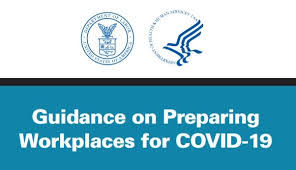Health and Safety in the New COVID-19 Pandemic Era

Let’s face it – we have all suffered (and are continuing to suffer) through an extraordinary time. I know this is just another profound grasp of the obvious but the world is slowly recovering but with lots of changes and the continuing threat of a “relapse” or recurrence of the pandemic. Our economy has been devastated and economic growth will occur slowly.
We face significant challenges – our society, economy and political forces – that will require change. As the economy starts to recover, it is clear that business activity for most organizations will recover slowly and carefully. it will be a long process before we can ensure health and safety. For now, we have new rules of distancing, masks and limited interactions for fear of spreading a contagious virus.
In this context, companies have to undertake a critical process – define a new governance structure that incorporates a new configuration of risks and circumstances to address health and safety.

At the top of everyone’s list is ensuring health and safety of employees. In this context, federal, state and local workplace regulations should be the highest priority for human resources and compliance. Employees are fearful of the workplace for their own health and need to be educated and reassured that the company’s work environment is safe. As part of this effort, employee training on workplace interaction and rules governing social distancing, masks, gloves and other necessary equipment has to be conducted and information on these issues should be disseminated promptly.
The Occupational Safety and Health Administration has released guidance on COVID-19 workplace issues, including construction, manufacturing, package delivery, retail and general industry information. These are important documents to publicize and ensure that standards are met. At the same time, OSHA has released interim enforcement guidance to reflect time needed to adjust to the COVID-19 world and protect employees from harm.
Human Resources and Compliance Staff have to work together to publicize the new policies and procedures governing workplace safety and health. Training programs should be conducted, preferable remotely before resuming operations.
Some basic rules have to be communicated and reinforced:
- Social distancing should be enforced at six feet minimums (taped distances akin to grocery stores should be implemented);
- Workstations may need to be moved and plexiglass shields could be used to ensure safety;
- Employees who are sick should stay home;
- Flexible working hours and arrangements (i.e. staggered shifts), if feasible, should be encouraged to reduce risky interactions;
- Communicate public health updates and warnings as they become available;
- Train workers on how to use masks, protective clothing, and other equipment;
- Authorize employees to wear masks and require masks at any employee meeting or gathering with appropriate social distancing rules;

- Educate employees on proper etiquette – covering nose and mouth when sneezing or coughing
- Encourage frequent washing of hands;
- Provide wide-availability of hand sanitizers and encourage cleaning of common surfaces with availability of towels and cleansers;
- Avoid re-use or shared use of equipment by multiple employees; and
- Encourage employees to report safety and health concerns.















